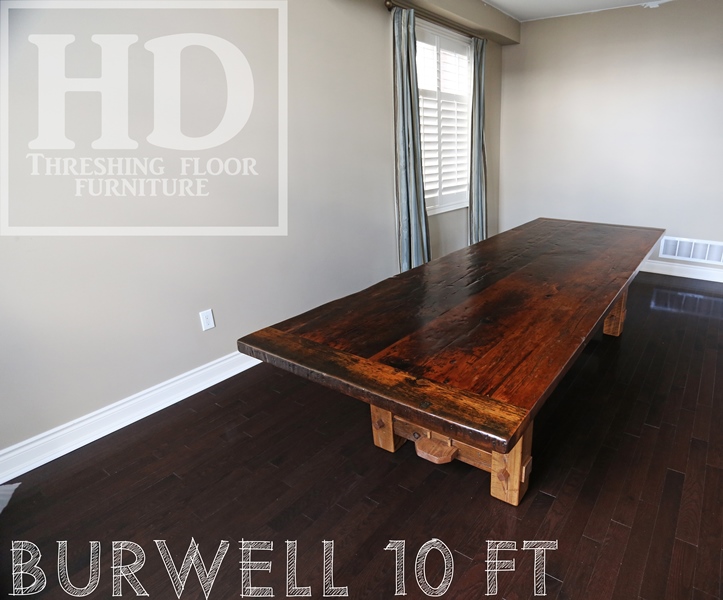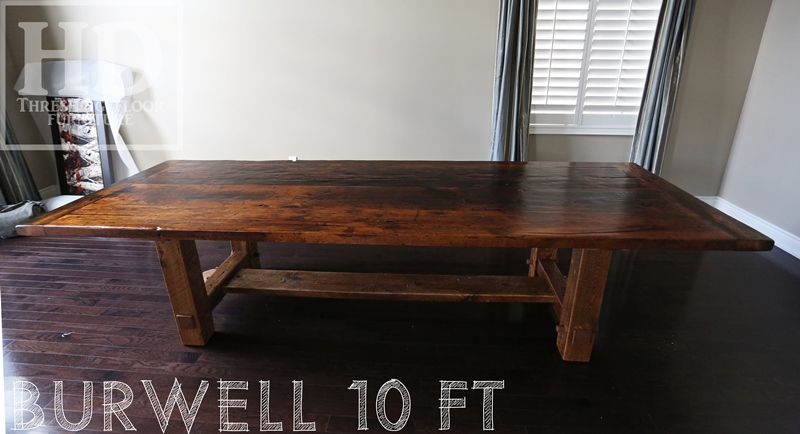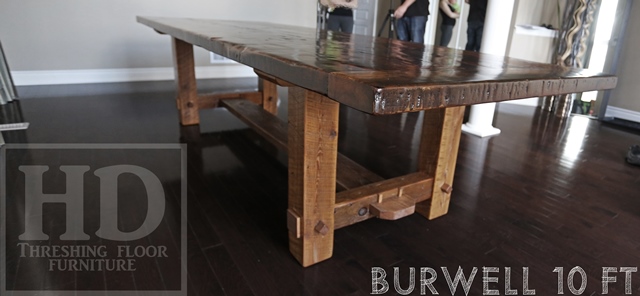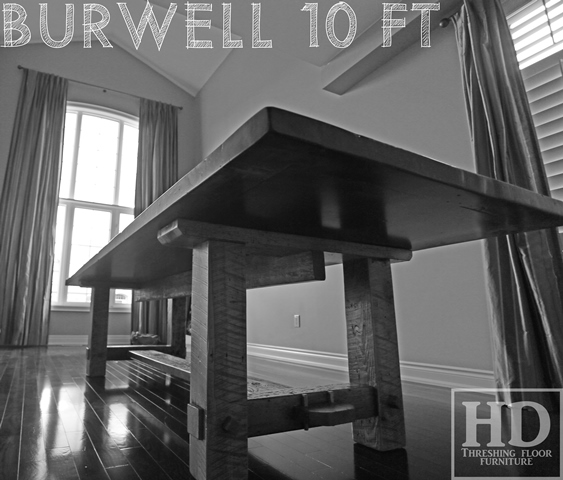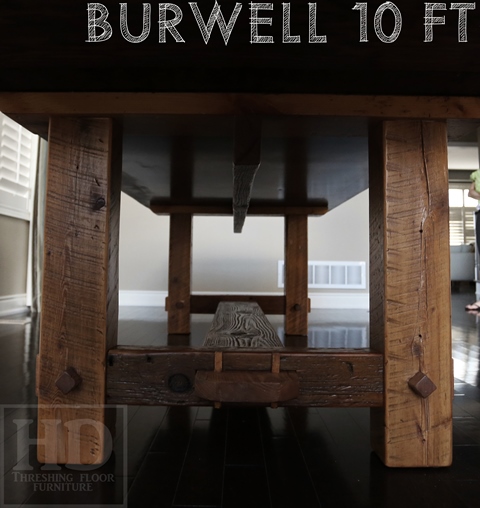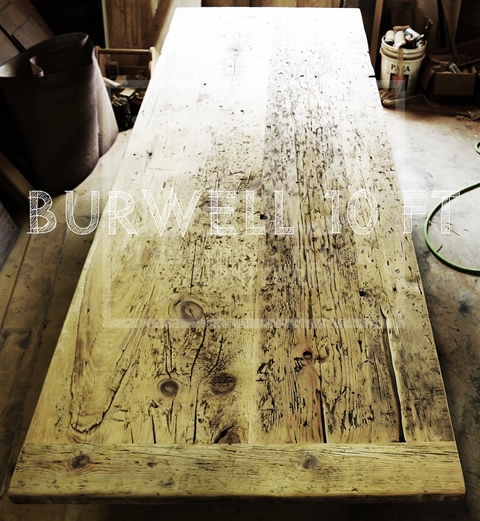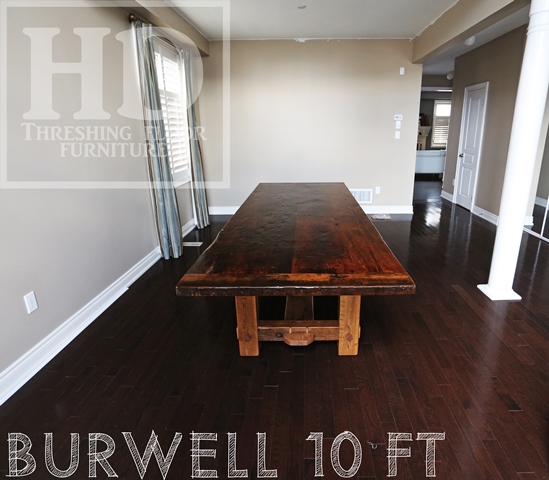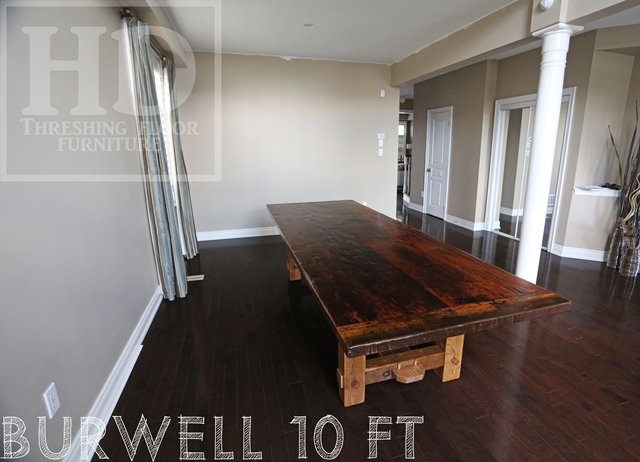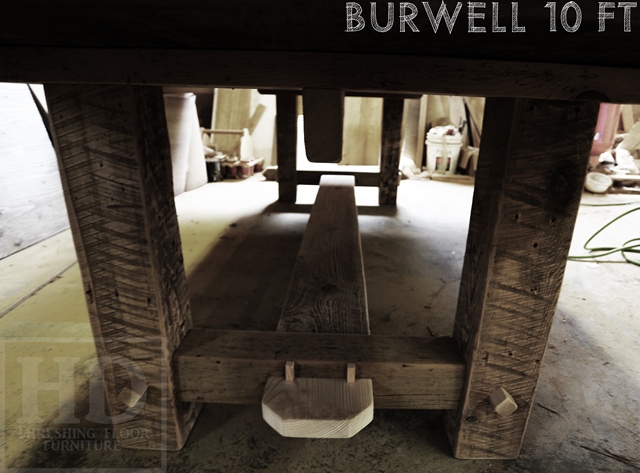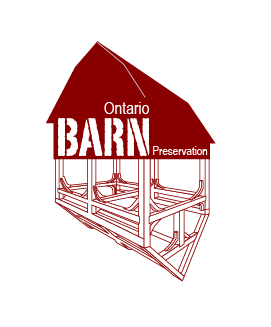More machining does not always improve a piece…
Wednesday, September 11, 2013
A totally different approach..
We recently created this rustic dining table for a client in Oakville, Ontario. This Frame design [a page dedicated to this style soon to be created on this website] features 4 heavy-duty, hand-made legs; with adjoining posts. Everything is made of authentically distressed material from old barns.
We design our tables around the dimensions we have to work with in the raw barn wood… the main purpose being to create a final product that is beautiful and not overly processed. The less we touch the original face distressing.. the better!
Most woodworkers do a lot of planing/sanding/turnings in an effort to “improve” a piece. Our mentality is that keeping as close as we can to the actual raw material / patina is by far the most unique.. and is much more likely to literally creates conversation on a regular basis. NOT touching the original faces when constructing a table is actually significantly more difficult given how warped / cupped/ split / rough reclaimed wood is, but.. After 100 years or so of a piece of wood being exposed, distressed and aged… can a machine really improve on that type of surface?
Details of this job:
10 foot Frame Table – 46″ wide – [Light] epoxy coating on top with sprayed matte polyurethane finish – 29″ height -Reclaimed Threshing Floor Pine
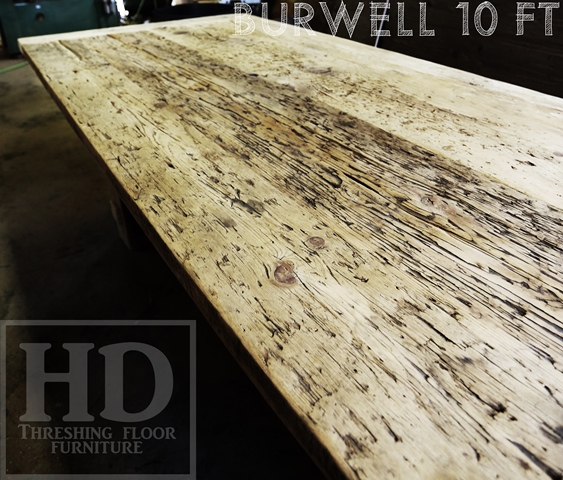
Muskoka Tables maMuskoka Tables made from Reclaimed Wood with epoxy finish de from Reclaimed Wood with epoxy finish 8

